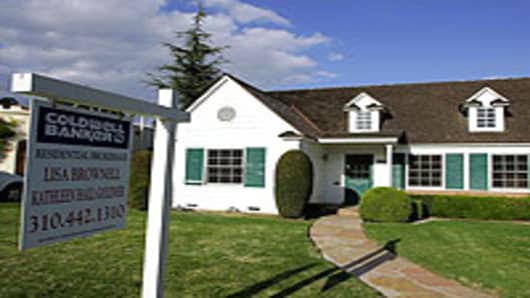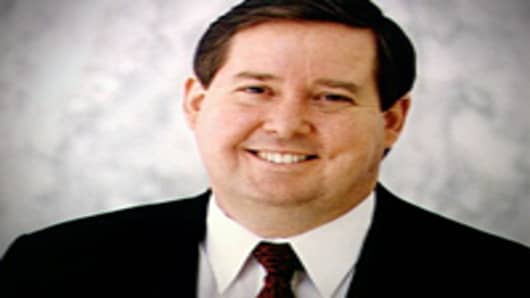Federal initiatives to stimulate the housing market have created a shallow and narrow recovery, making it likely that Congressional proponents of an expanded homebuyer incentive program will make another push to make it law following the August recess.
The existing homebuyer program and an even larger one to contend with a tsunami of home foreclosures, as well as federal efforts to nudge down mortgage rates, appear insufficient to tip the scale in favor of a broad housing market.
Tighter credit and appraisal conditions, in particular the evaporation of the jumbo loan market, millions of underwater homeowners unable to refinance, still declining prices in some major markets and a sizable inventory of bargain basement bank-owned properties are all weighing on the conventional market.
"The problem in our marketplace is the move-up market, which is basically dead," says Sen. Johnny Isakson (R-Ga.), who is chief Senate sponsor of legislation to expand the tax credit. "People are buying bargains. There's almost no market for the average home. We've got to drive the knowledgeable buyer and willing seller market."
In that context, recent data showing gains in home sales is somewhat misleading.
In distressed, or highly depressed, markets like Nevada, Arizona, California and Florida, 80 percent of sales are bank-owned properties, being gobbled up by investors and first-time buyers at a 40-60 percent discount.
Isakson's legislation and a similar bill sponsored by Rep. Ken Calvert (R-Calif.) would essentially increase the value of the credit to $15,000, or 10 percent of the purchase price, whichever is less, and apply it to all buyers of primary homes. The program would last a year.
A version was passed in the Senate but was watered down by the House as part of the stimulus package. In its current form, the tax credit applies only to first-time buyers and tops out at $8,000. Single individuals with incomes up to $95,000 and married couples (up to $150,000) are eligible on a pro-rated basis.
Proponents of the legislation say it would generate an additional 500,000 home sales, which is about 9 percent of the 5.7 million new and existing homes sold in 2008.
Supporters also point to the collateral impact to the economy. By various estimates, each sale generates several thousand in direct real estate fees, several thousand more in home furnishings and improvement and also helps lead to the construction of new homes.
The Joint Committee on Taxation estimates the cost of the program at $39 billion.
By contrast, the Obama administration has committed about $75 billion to its mortgage modification program to aid 3-4 million homeowners in jeopardy of foreclosure.
"We've spent a lot of money on things that haven't worked; this will work," says Calvert. "There's a lot of money on the sidelines. Like any good buyer they're trying to time the acquisition of the primary asset of their lifetime. Let's give them an incentive to get into the market immediately. It's part of the solution, not the whole solution."
Current market conditions and government policy appear to be helping first-time buyers, many of whom were priced out of their local market during the boom years.
Not only is the median price of an existing single-family home down 25 percent from its 2006 peak, affordability is up sharply and down payments are shockingly low, thanks to government lending programs.
Federal Housing Administration insured loans require as little at 3.5 percent for a down payment and "less than perfect credit," as the agency's program notes state. Once a small part of the overall loan market, FHA-insured loans are now 40-60 percent in various markets, say real estate and mortgage industry officials.
Under the existing tax credit program, which runs through December, an additional 862,722 households could qualify for a $175,400 house with a 10 percent down payment and a 5.50 percent 50-year mortgage rate, according to an analysis done by the National Association of realtors.
"It's helped-absolutely," says David G. Kittle, EVP of Vision Mortgage Capital in suburban Philadelphia and current chairman of the Mortgage Bankers Association. "Jumbo [loan] borrowers still have not re-entered the market," he adds, referring to the mortgage category also known as non-conforming, which has a value over $417,000.
Detailed national or regional data on first-time versus repeat buyer homebuyer is not available, but a snapshot reveals that they have been well above the 40 percent average in some recent months, especially in depressed markets, such as California.
"The downturn in the housing market makes a prime opportunity for first time buyers," says Robert A. Kleinhenz, deputy chief economist with the California Association of Realtors. "One of the obstacles for repeat buyers trading up is that they may be underwater with their current mortgage. Also, would-be sellers aren't sure we've hit bottom, so they will wait, knowing the chance of consummating a successful sale will be higher and they won't be competing with as many distressed properties."
Sales activity by price point appears to bear that out. According to NAR data, homes priced under $250,000 are up almost 17.8 percent year over year through June. In contrast, sales are down 13.3 percent in the $250,000-$500,000 bracket, 18.6 percent in the $500,000-$1 million one and 32.7 percent in the $1-4 million range during the same period.
"I would argue in high costs areas — New York and California — $250,000-$500,000 is an average-priced house, even in this economy, and folks there are struggling. It’s not just a blue-collar recession. It’s a white-collar recession, too," says Calvert.
Calvert's legislation has some two dozen co-sponsors in the House, while Isakson's has more than a dozen in the Senate, including Finance Committee Chairman Chris Dodd (D-Conn.), who along with Sen. Kent Conrad of North Dakota was accused by a Countrywide executive of getting a sweetheart loan deal.
The expanded tax credit concept also has the ardent support of such groups as NAR, the Mortgage Bankers Association, National Association of Home Builders and Business Roundtable.
Both Rep. Culvert and Sen. worked in real estate before entering Congress, so skeptics might easily write off their roles in the housing debate as industry boosters, but by the same token they are astute analysts of current conditions as well as other industry downturns.
Sen Isakson, for instance, notes there was a broader buyer incentive tax credit during the 1973-1975 recession, which was considered effective. At $2,000 dollars, it’s roughly equivalent on an inflation-adjusted, house-price appreciation basis.
_____________________________________
Calculators and Advice from Bankrate.com:
- Compare Mortgage Rates Nationwide
- Struggling to Save Your Home? Get Help Here
_____________________________________
"This is a housing recession feeding on itself," says Isakson. "I'm hopeful that those who have been opposed to it [the bill] look at history."
Financial Services Committee Chairman Barney Frank (D-Mass) and other powerful House Democrats are thought to be among them.
Isakson thinks there will be another legislative run on the issue in September, by which time current housing trends will be more defined and the general health of the economy might be more evident.
"With such a large inventory and prices down sharply and with rates near all time lows, you would expect more people coming to the market," says Mary Trupo, the NAR's policy specialist. "We have to get the housing market beyond distressed properties and moving to get an economic recovery."





